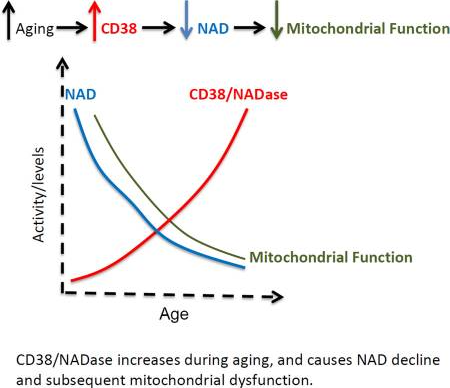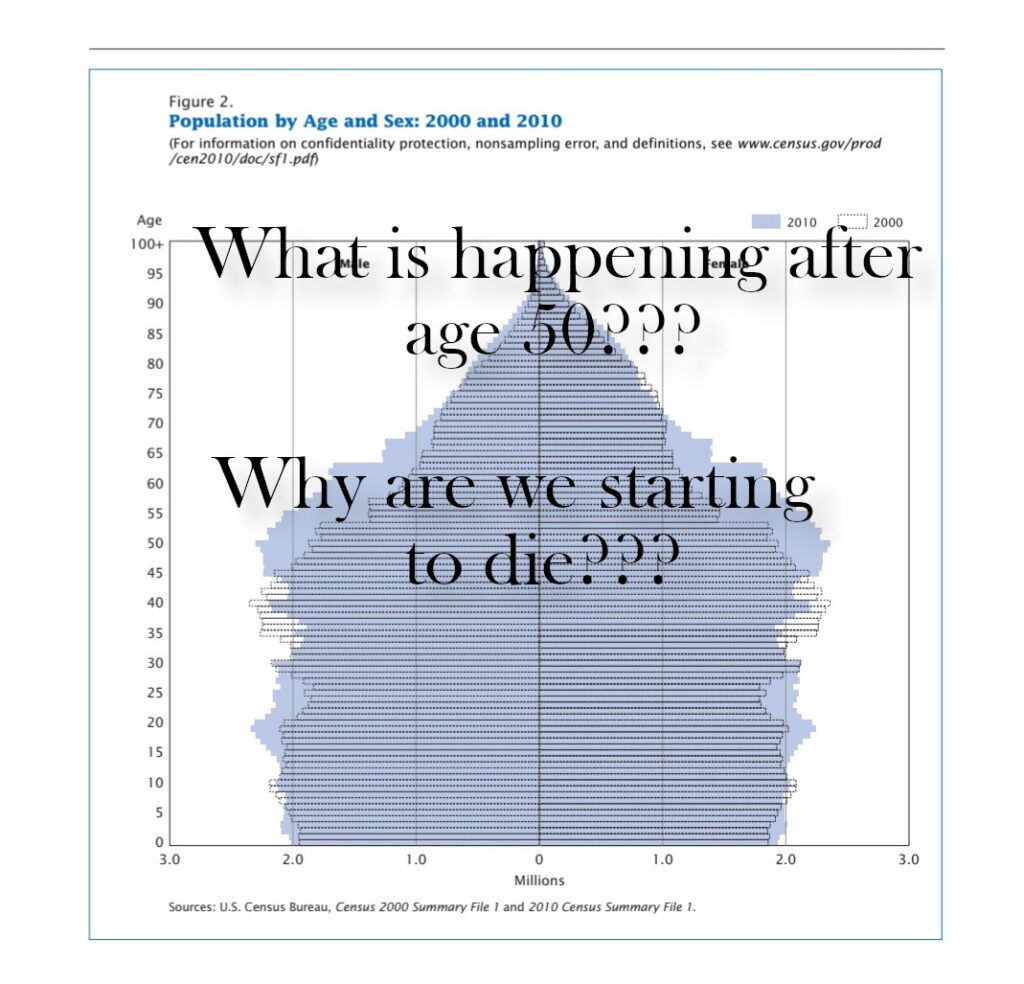- Cell division requires a great deal of energy to be done properly. Much of that energy comes from NAD+
- NAD+ levels decline significantly by the age of 50 leading to a large increase in age related illnesses within the human population.
- The “hallmarks of aging” begin to manifest themselves leading cells to ultimately and catastrophically fail.
In the intricate world of cellular biology, a phenomenon known as “cumulative catastrophic cellular failure” plays a pivotal role in the aging process.
This article explores the concept of cellular aging, the role of apoptosis (cell death), and how addressing the root causes of aging can potentially extend healthspan. Discover the fascinating science behind cellular aging and its implications for human immortality.
The Science of Cellular Aging
The phrase, “cumulative catastrophic cellular failure”, summarizes a series of metabolic events that occur inside and outside of a cell that lead to failure of programmed cellular functions.
The result is ultimately causing the cell to either die (apoptosis), develop into a cancer or turn into a dysfunctional senescent state often referred to as a zombie cell.
A human cell is made from fusion of sperm and egg that undergoes roughly 41 cell divisions to produce a full grown adult. As animal cells divide there are numerous checks and balances within the cell to ensure that the organism develops properly.
Processes such as cellular differentiation and cell positioning that must to occur with precision to form organs and a functional being.
The development of a human from conception to early adulthood requires a significant amount of energy throughout the process.
The Role of Energy Molecules in Cellular Function
As humans age, the energy molecules required to maintain optimal cell function diminish, and errors start to accumulate. This marks the beginning of a cellular catastrophe, more commonly referred to as aging.
If we look at the molecule NAD+ which is the main source of energy that cells use to carry out these cellular functions, we see that it decreases in our cells over time. By the age of 50 humans have half as much NAD+ as they had in their 20s.

The Consequences of Cellular Aging
NAD+ plays several crucial roles in cellular function. It ensures the accurate duplication and separation of DNA molecules and the proper functioning of metabolic proteins. It also aids in the appropriate timing of cell division and death. When these processes fail to happen people start to get sick and die. The outcomes are illustrated in the accompanying graph, which displays population distribution by age and gender.

This graph demonstrates that as Americans reach the age of 50 they begin to die. Death begins with the onset of diseases that we are all familiar with. Cancer, heart disease, stroke, diabetes, liver disease, etc. This continues steadily until almost everyone is dead by the age of 100.
The question then is can you have a different fate? Is it possible to change your odds of acquiring a disease at 50 to lets say extending that risk out to 60, 70 or even 100??? Can you delay the morbidity that aging entails? Do you want to feel younger and healthier for longer while avoiding much of the frailties of aging?
Surprisingly the answer to this is yes and it can be achieved with a careful plan of tending to the major players of cellular aging.
Can We Alter Our Fate?
These days many people take vitamins to help their bones, heart, brain, skin, liver, immune system, etc, etc, etc. Taking a supplement to improve a single organ system or by taking multiple supplements to improve multiple organs systems fails to address the root cause of why these organ systems are all failing.
They are all failing because our cells are degrading through an accumulation of errors. This is due to the roughly 12 areas of cellular aging. Only by treating these causes of aging can one have any hope of delaying the inevitable cumulative catastrophic cellular failure which I will term CCCF.
Shifting the Healthcare Paradigm
Society Needs to Refocus Attention on Prevention. The current healthcare system we have today focuses almost exclusively on disease management. Very little research dollars are dedicated to the root cause of why disease starts and how to prevent it. Without a fundamental shift in this paradigm patients will continually get sick prematurely and fall into the same pattern as depicted on the above graph. There is, however, a better way to practice medicine which represents the future of medicine with a singular focus on maintaining proper cellular function.
The focus is on the 12 identified areas of aging. These areas when compromised lead to cellular aging resulting in cell death, transformation into cancer/tumor cells, or entry into senescence.
The Path to Human Immortality
Based on this science the cure for cancer, I believe, will also lead to a cure for aging which will inevitably lead to subsequent human immortality. The disease process of cancers with immortal cell growth physiology is inextricably tied to figuring out human immortality. Immortality, as defined as the ability to live without dying from typical disease processes. Diseases include cardiovascular, dementia, infections, renal diseases and cancers which kill the vast majority of Americans. Each of these causes of death can be tied to a failure in one of these areas of aging that lead to the disease process.
Understanding cellular aging and its impact on human health is crucial for extending healthspan and potentially achieving human immortality. By addressing the root causes of aging and shifting our healthcare focus towards prevention, we can pave the way for a future where individuals can enjoy longer, healthier lives. Embracing the science of cellular aging opens up new possibilities for the future of medicine and the pursuit of human immortality.

Please continue with the next article in series.
- sample
- samle
Read Next: Nicontinamide mononucleotide

